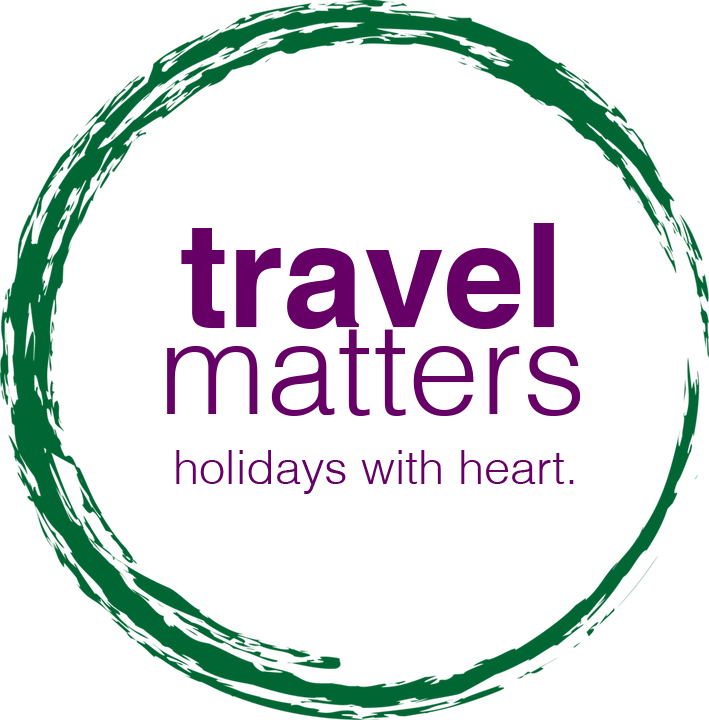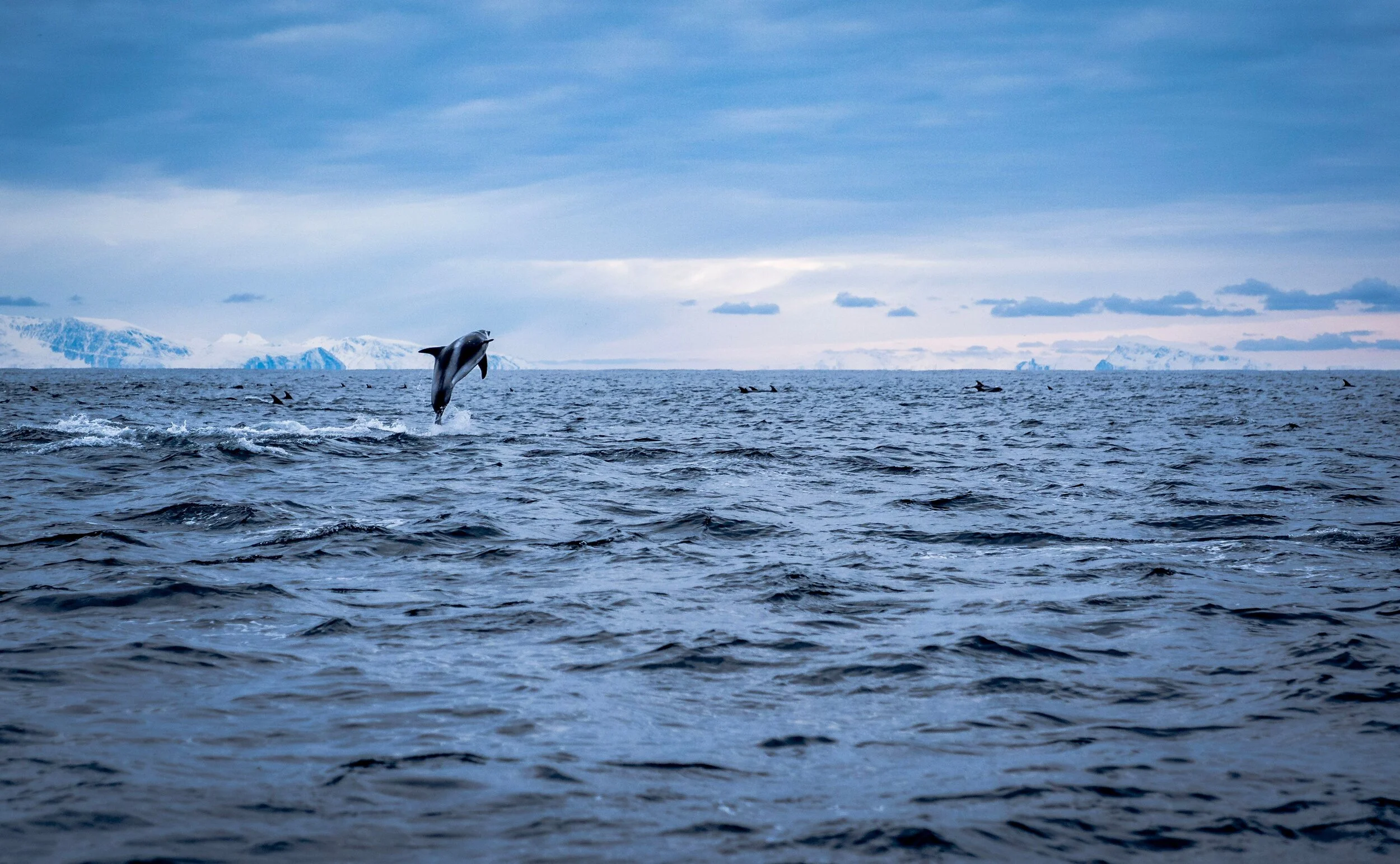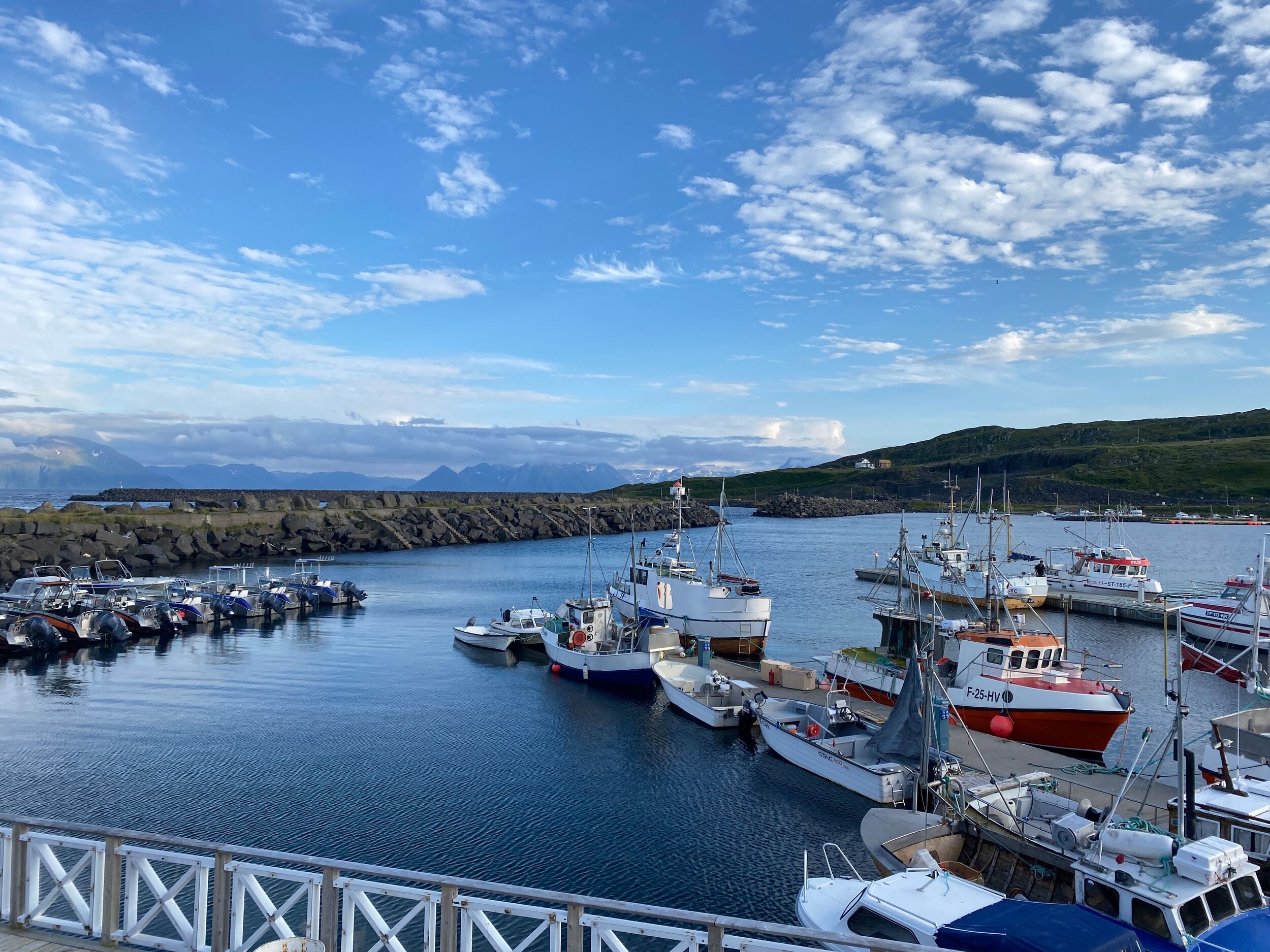‘Let me just see the plane off, Torunn, then I’ll fetch your car, OK?’. We have just touched down at Hasvik airfield on Sørøya island, and in the arrival zone I’m perplexed to hear my name called out by a stranger. I turn around and a person – I’m assuming it’s Oddbjørn – smiles and waves. On Sørøya, Oddbjørn is the equivalent of Hertz and Avis. Together with my nephews Brage (16) and Kristian (11) and my sister Veronica, I have come to the island for the first time, with high hopes for some Big Fish Adventures.
Sørøya is located north of Alta, west of Hammerfest in Troms & Finnmark, Norway’s northernmost county. It’s both the fourth largest island in Norway, and the biggest one to be unconnected to the mainland by road. Its intense summer green colors have given the island the name ‘The green eye in the North’, but this gem of a destination is increasingly known as ‘Storfiskens rike’ – Kingdom of the Big Fish. Surrounded by the deep Norwegian Sea and with more than 1200 freshwater lakes, this is a place full of improbable fishing stories, most of which are actually true.
The High Road to a True Wilderness
Although we have chosen to arrive by air, Hasvik village can also be reached by car ferry or passenger ferry (LoppaXpressen) from Øksfjord – an embarkation port for Hurtigruten, located one hour and 40 minutes’ drive from Alta. The road from Hasvik (population 831) takes you through Breivikbotn (pop. 307) as far as Sørvær (pop. 239) 21 km away; by contrast, the villages on the island’s northern flank have no road connection to the south. That part of the island can be reached by passenger ferry (MåsøyXpressen) or car ferry from Hammerfest. The lack of road between north and south has prevented extensive (caravan) tourism on the island, helping to preserve the island’s authenticity, not to mention the wilderness at its core.
Between 2017-20, the two local municipalities initiated a project with the Norwegian Trekking Association which resulted in the creation of a 100 km hiking trail from the mountain Fuglen in Sørvær to Tarhalsen in Akkarfjord (80 inhabitants and two camels). The path is marked with 15,000 red ‘T’s and 5000 ‘varder’ – stone cairns placed on high points in the terrain. The trek can be completed in 15-20 km stretches over a week, and introduces hikers to a rocky, mountainous landscape with steep slopes and rolling countryside, spectacular views, constantly changing weather conditions and temperatures in the neverending summer light. On this trip, however, we are not here to conquer the island on foot.
Single Resource, Multiple Opportunities
In our chariot for the week, a 4WD Outlander, we drive the 1.4 km to our Sørøya home – a two-storey house by the sea featuring a pair of large terraces, direct harbour access and views reaching far across the sea to the towering peaks on the mainland. Kitted out with modern facilities and within easy walking distance to the town’s only grocery store, Rocky pub & dance bar, and the only restaurant, Håen Cafe & Bistro, we are well set up for the week! Which makes it all the easier to focus on our task for the week: to find out what kind of big fish are lurking underneath the surface of all this water surrounding us...
We are given a warm welcome by Mona, Oddbjørn’s sister, who runs the local hotel and activity company with her 22 year old son Bilal and former husband Ahmad, who emigrated to Norway from Lebanon when he was 21. Over coffee on the porch, she shares her story and thoughts about the future for her family-run business. Mona does not want to attract huge numbers of guests and anglers to their beloved island; instead she wants to attract a smaller number of the right visitors, and on their terms. To meet the increasing interest in big fish adventures from a high-end clientele, the six units in Molokroken (where we are staying) will soon be supplemented with a new hotel building, designed by the internationally celebrated architects Snøhetta. This facility will be reconstructed from the original wood-framed fish factory on the harbour and will be retrofitted with a quayside sauna, restaurant, cafe and grocery shop.
From the 1970s to the early 2000s, their hotel mainly catered to professionals from the commercial fishing industry. When three factories went bankrupt in 2002, the hotel lost most of its business and had to seek ‘new gold’ in order to make a living and keep its place on the island. Luckily, the proprietors soon realized that the fish was a resource that could be used in different ways to generate new business opportunities. With the help of professional recreational anglers Michal Simco and Marc von Roie, they set about rebuilding Sørøya’s image as a ‘Kingdom of the Big Fish’. Slowly but surely they succeeded in attracting anglers from all over the world. Today, the multitalented Bilal is the prime mover when it comes to developing their fishing activity business. Together with fellow anglers and marine recreational fishing (MRF) enthusiasts Daniel and Hans Kristian, Bilal has assembled valuable knowledge and insight about the best fishing spots, equipment, species, how to get big fish to bite, and methods that thrill anglers of all sorts, as well as encouraging good fish health and welfare while preventing negative impacts on fish stocks.
Marine Recreational Fishing - A brief introduction
Norway is Europe’s biggest marine recreational fishing nation. (MRF is defined as ‘fishing for purposes other than meeting a basic nutritional need or for sale/trade’.) Why? It provides many health-promoting and wellbeing benefits, including powerful nature experiences, quality time with friends and family, and positive impact on the environment. The economic impact is also immense: MRF in Europe has been estimated to contribute around 10.5 billion euros while supporting 99,500 full-time jobs.
Because this recreational form of fishing often has limited regulation, it relies on responsible participants using best angling practices in order to minimize any negative impact on fish stocks. The rise of recreational fishing has led to greater awareness of many environmental issues around the ecology of fishing, with knock-on benefits to the local ecosystem.
Our first Big Fish Adventure
Daniel, our fishing guide, is well informed about all this research. He is also one of Norway’s best species-fishermen, despite his tender age of just 21. Like all of Big Fish Adventure’s guides, he is certified in coastal fishing, safety and crisis management. Dressed in Teletubby-like survival suits, we head out to sea. Our first mission: to catch pollock which will serve as bait for our main objective: the much larger halibut.
Whereas national laws permit the landing of all halibut between 80-200 cm, the Big Fish Adventure crew releases all fish sized between 80-130 cm, and limits every guest to a maximum of two halibuts per trip. This is to secure the future halibut population and ensure Sørøya remains a world class fishing destination for future generations. Halibuts bigger than 130 cm – a common catch in these parts – are mostly female, and play an important role in species propagation.
For those of us born and raised inland, hooking pollock so easily, while watching the breathtaking coastal scenery – the deep green island, turquoise water, coral beaches, small huts scattered across the mountainsides dropping into narrow fjords – is (almost) enough to make this trip worthwhile on its own. Daniel shares his knowledge with a contagious passion, and plays music which adds an entertaining diversion while covering the distances between fishing spots. For me personally, the whole thing is a healthy exercise in patience as we wait and wait for the big fish to bite. Hours pass, and when the halibut is finally hooked, we are in the last minutes of the sixth and final hour of our fishing adventure.
The excitement onboard is immense and our patience is rewarded straight away. Slowly but surely, and to ecstatic cries, a 143 cm long halibut is coaxed to the surface and carefully lifted into the boat for observation, measurement and two quick trophy pictures, before being released back into the deep sea. Together with researcher Keno Ferter from the Institute of Marine Research, a lot of work has gone into finding the least harmful catch-and-release methods, and we are assured that the hole we’ve pierced through the fish’s skin near the jaw should heal within a week. High on adrenaline, we return to the shore full of experience and newly gained knowledge, inspired to explore further.
Island Life - Therapy for Busy Minds
It’s not only in the deep sea around the island that fish can be found. More than 900 of Sørøya’s 1200 freshwater lakes are teeming with them. Many of the lakes can be accessed on spectacular hiking trails of varying lengths and levels. We spend our remaining days on leisurely hikes to lakes such as Krokvatnet and Bollevatn. On various occasions we get lost, wade across rivers, and follow forest and mountain paths with no mobile coverage. While fishing, we sit in the midst of impressive natural landscapes totally devoid of other people. Only the reindeer, frequently traversing the more remote areas, watch us like strangers in their domain.
Sørøya is also known for its war history. Around the island are everal spectacular caves used as bolt-holes in the second world war by honorable northern Norwegians who refused to be deported by the German occupiers. One of these caverns, Kvithellhula, shaped by waves over millennia, was home to 35 refugees over 99 days in the winter of 1944-45.
Despite the neverending daylight, slow life seems to travel fast, and we discover that one short week on the island is not enough.
Bespoke Travel
Tailored Sørøya Island adventures can be curated for experienced anglers as well as beginners, or just anyone seeking a slow-paced escape holiday in spectacular surroundings. A week adventure (6 nights) in a harbourside Molokroken unit (6 person capacity), including two guided big fish adventures by boat, 4WD rental car at disposal, one guided island excursion with picnic, and one culinary Taste of Sørøya dinner experience, it priced from XXX USD per person based on 6 guests travelling together.
Crossing Sørøya by Foot can be done with a private nature guide or as part of a small guided trekking group. Prices on request.
This guest blog was written by Torunn Tronsvang from UP Norway, one of our partners in Norway










